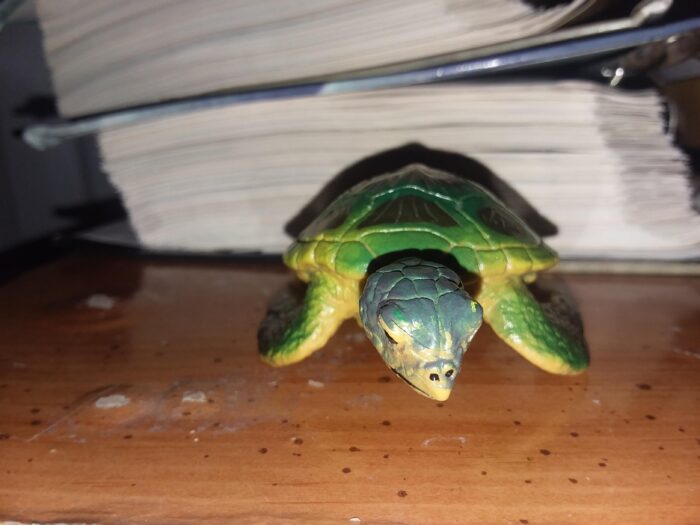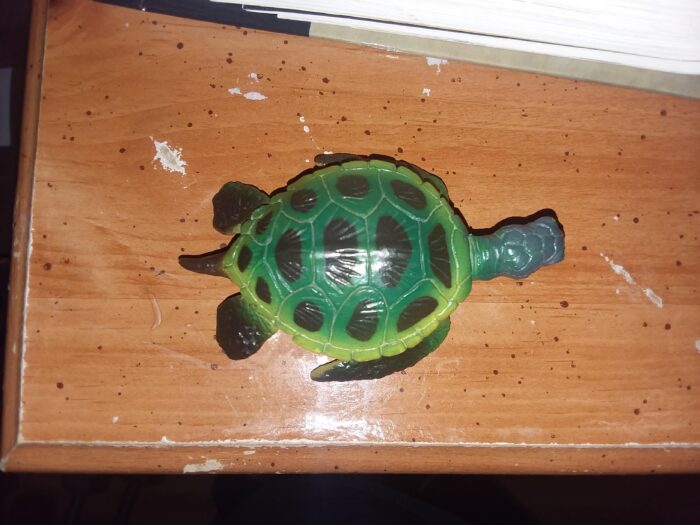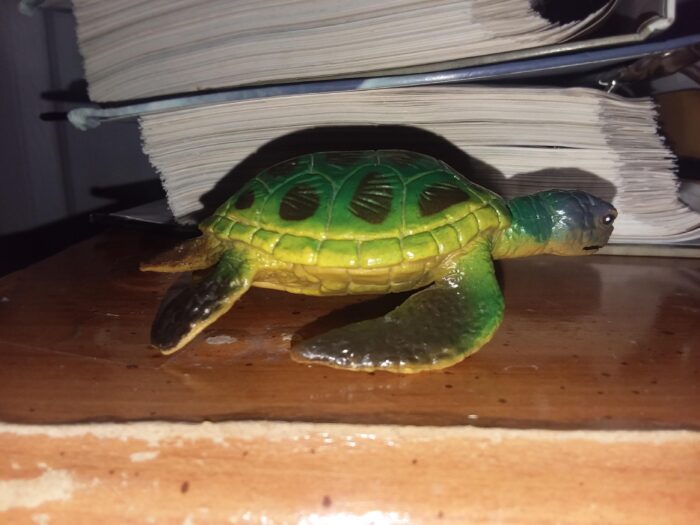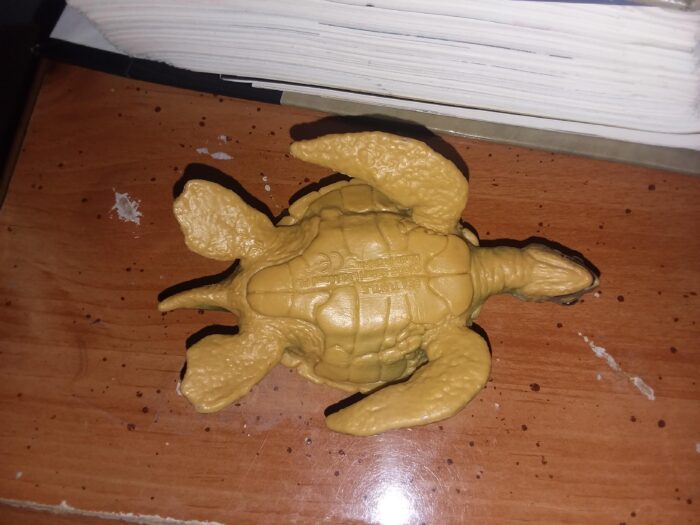With the loss of the great Mesozoic marine reptiles such as ichthyosaurs, mosasaurs, and plesiosaurs, turtles remain the most popular reptilian taxa that are recognized for roaming the Earth’s oceans. Seven species currently exist, and among the most popular and longest-studied is the green sea turtle (Chelonia mydas). The species isn’t actually named such based on its external appearance but instead the greenish color of its fat. Under several conventions, a ”black sea turtle” was attempted to be described as a separate species or subspecies, but genetics failed to support this division. Two subpopulations were genetically identified between Atlantic and Indo-Pacific individuals, with distinct nesting and feeding sites. The green sea turtle is found throughout all of the world’s tropical and subtropical waters. Over the course of their life, hatchlings are pelagic carnivores while older individuals are coastal herbivores. It takes over two decades for the average individual to reach sexual maturity, and less than 1% of hatchlings are expected to reach this age due to high predation rates. Those that do make it to maturity may live up to 80 years. The green sea turtle is the second-largest species of sea turtle after the leatherback (Dermochelys coriacea). Most adults have carapaces ranging from around 0.8-1.2 meters in length and weigh between 100-190 kilograms. Exceptional specimens reach 1.5 meters and over 300 kilograms. Green sea turtles are able to sense of the magnetic fields of the Earth for navigation, which aids their natal homing during their breeding and nesting. The green sea turtle is classified as an endangered species with multiple populations at risk of extinction due to exploitation, pollution, and habitat loss. In their youth, green sea turtles feed on mollusks, fish eggs, jellyfish, crustaceans, algae, and worms while adults feed more on seagrass. Green sea turtles are preyed upon by different classes of predators throughout their life history: jackals and red foxes as eggs; crabs and sea birds as hatchlings, and exclusively large sharks such as the tiger shark (Galeocerdo cuvier) and less commonly by killer whales (Orcinus orca) as adults.

The sea turtle I’m reviewing now is another relatively older figure, one of the few reptiles I have in my collection. This was an item I bought as part of a lot from a vintage collector that came with many other 1990s Wild Safari Sealife and Monterey Bay Aquarium figures, which I will likely review later.

The figure is literally marketed as a generic ”sea turtle”, but the carapace and head shape allow us to confidently identify it as a green sea turtle. This figure features 4 lateral scutes and a modest beak. With a carapace length of 6.3cm, this figure is roughly in the 1:12-1:24 scale. This turtle will work well with many marine animal figures designed for the 1:20 scale. For the time this figure came out, the sculpt is acceptable, but nothing extraordinary. As mentioned earlier, the anatomy of the carapace was fairly captured. Nice detail exists for the skin and the mouth shape atleast accomplishes preventing this figure from being interpreted as a hawksbill’s. However, there are deficits in its realism. The shell itself is too round and bulky, the body should be much slimmer and streamlined. Another issue is that the head is far too large.

Issues with the sculpt aside, the largest problem is this figure’s paintjob. As mentioned earlier, this turtle’s name was not derived from its outer coloration at all. Looking at this paintjob, it’s obvious that Safari Ltd. did not understand that when planning the coloration of this figure. Most of this turtle is green and yellow when an actual green sea turtle has a brown shell, dark-colored scales, light yellow skin. There are also these dark patches on the carapace scutes that really shouldn’t be there at all. Generally, the only patterns on the carapace are light-colored streaks. Overall, accuracy is pretty weak in this paintjob.

 Otherwise, on a more positive note, the figure overall is atleast fairly detailed, with the texture along with other parts of the body such as the plastron and flippers, even if they aren’t the most accurately painted.
Otherwise, on a more positive note, the figure overall is atleast fairly detailed, with the texture along with other parts of the body such as the plastron and flippers, even if they aren’t the most accurately painted.

Overall, Safari’s 1996 Sea Turtle is certainly not the best-aging of the vintage figures I’ve reviewed so far. On the other hand, looking back at this one does allow us to better assess the improvements Safari Ltd made going forward. As far as I’m aware, the company has updated this species twice within their Sealife line over the past 25 years. On that note, I would much sooner recommend a collector to obtain Safari’s latest update instead of the older figure.
Disclaimer: links to Ebay and Amazon on the AnimalToyBlog are affiliate links, so we make a small commission if you use them. Thanks for supporting us!



